| |
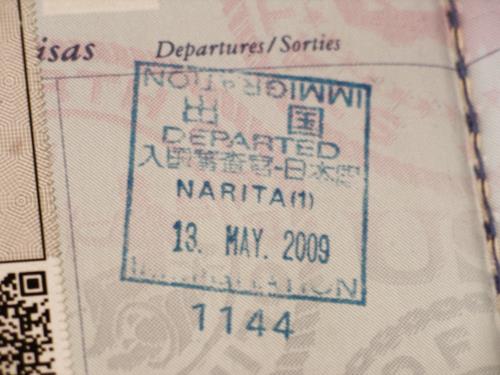 An adventure ends...All good things must come to an end, and our lives in Japan were no exception. On May 13th — two years, one month, and 18 days after Matthew arrived in Japan — we moved back to the U.S. Let's Sharing, too, is at its end. It was created to share our lives in Japan with our friends and family back home. We didn't expect our little blog would be a big hit, but it turned into a great success with more than 31,000 hits over its two-year run. For that, we want to thank all of our readers. The web site and archives will remain, but it will no longer be updated. ... an adventure beginsSo, what's next for us? We're going back to our lives in America, but we like to think that our experiences in Japan have trained us to view our world with eyes and ears more open than before. In the same spirit as Let's Sharing, we'll be writing a new blog, Hokui 39 Do, to share American life with our friends in Japan. We'll write most of it in Japanese, but there will be some posts in English and lots of pictures. So if you enjoyed Let's Sharing, you may find Hokui 39 Do interesting, too.
[ 2 comments ] permalink
Famous writer and poet Miyazawa Kenji was born in Hanamaki, just north of Kitakami. Hanamaki is full of public art that references his works, including this mural of his best-known story, " Night Train to the Stars". The mural is painted in invisible UV-reflective paint, and illuminated by blacklight at night. So what appears to be an ordinary retaining wall by day transforms into a glowing image of trains and planets after dark. 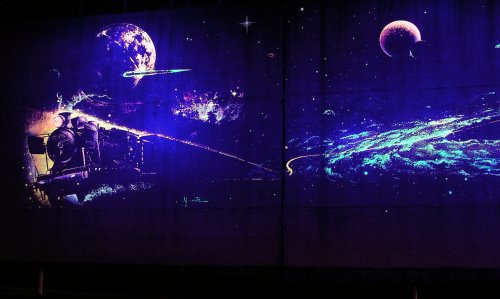
The "cherry blossom front" is finally crossing Kitakami on its northward journey. In the warmest parts of town, the cherry trees are in or near full bloom, while they're just starting to bloom in cooler areas near the rivers or in the mountains. Here are the cherry trees at the tiny Buddhist temple near our house. 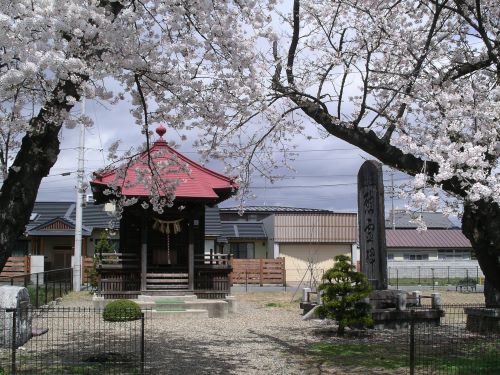
The gutters on the sides of many roads here are deep ditches, and in the countryside where they are uncovered, you have to drive carefully lest you allow a wheel to drop into one. In the cities, however, they are usually covered with blocky cement caps. Although there is space between the caps for water to drain into the ditches, they are also frequently interrupted by grates and grills to ensure that even large amounts of water can drain away. Of course, many of these grates and grills are simple grids of steel. But if you've seen the manhole covers we've posted about, you might not be surprised to learn that some are more decorative. The most common decorative design seems to use a honeycomb grid and the city logo in the center. 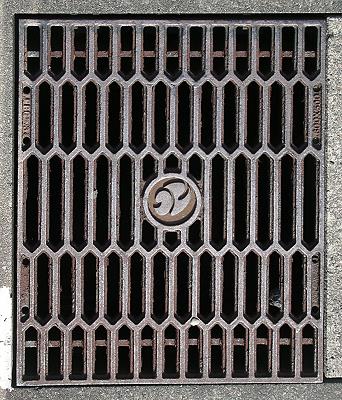 There are some still around with an old city logo, too. 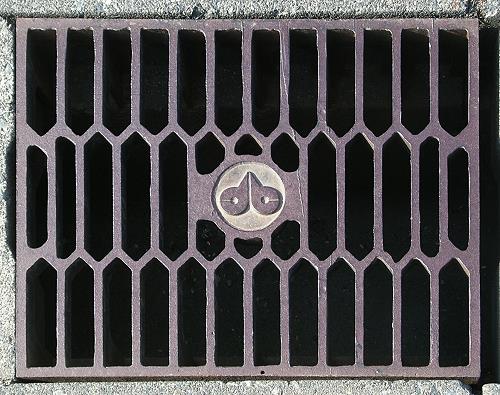 This logo is the prefectural symbol of Iwate. 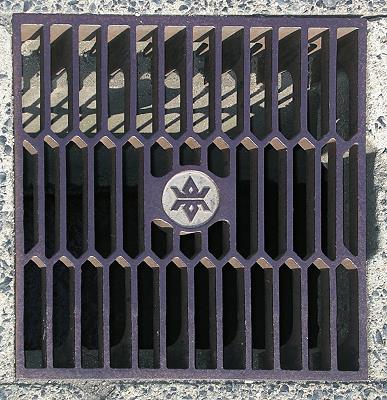 The logo doesn't have to be on a honeycomb, either. Here's one with a slanted grid. 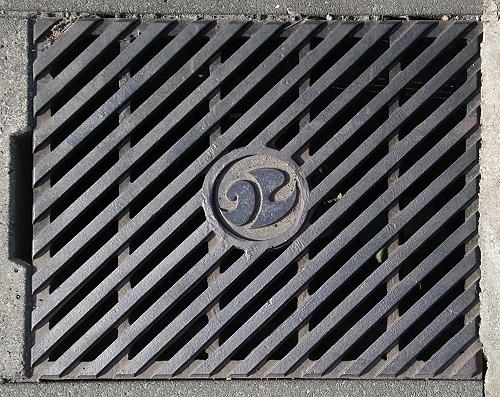 The maze-like pattern on this one evokes ancient western cultures. 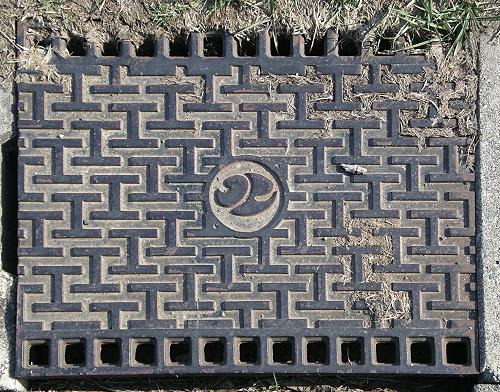 Not all of them are just a logo. Some feature the city's official flower, the white lily. 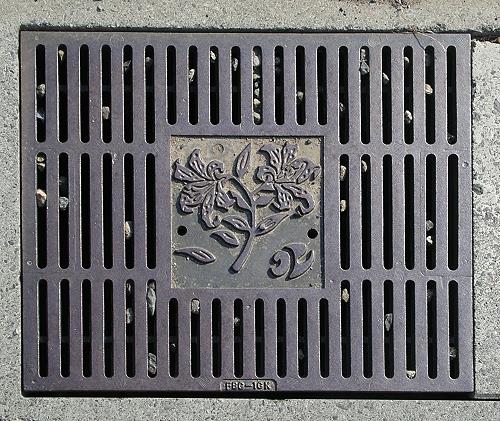 The largest and most extravagant ones — with white lilies, again — are along the main street running away from the station. 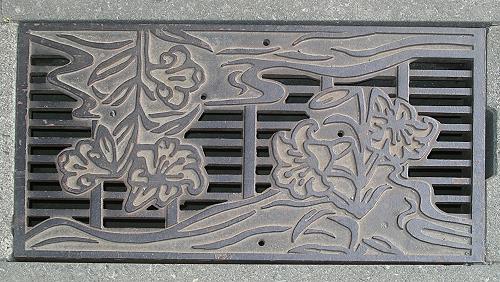
Thursday, April 2, 2009, 9:06 PM GeneralPosted by stefanie The changing of seasons from winter to spring is marked by personal transitions in Japan. The school year ends in March and resumes in April. March is also the month during which many companies transfer employees, presumably so they can get moved and settled in before school starts again. People leave and/or begin things like language classes or health club memberships. Spring is a time when many people bid farewell to old lifestyles and prepare to embrace new ones. This year, we're the ones saying goodbye. In about six weeks, we will leave Kitakami to return to Washington, ending our life in Japan. We're starting to clear out the house and think about what we'll take back with us ( kotatsu!). We've taught some of our classes for the last time as they are transitioned to new teachers. And we're visiting old favorite places, keenly aware that (in many cases) that visit will be the last. To be sure, we still have many good times ahead. There will be lots of opportunities to visit with our friends and students before we leave and days to walk in the park with the dogs. There will be cherry blossoms and festivals and new experiences. Such is the plight of the leaver: torn between the sadness of making necessary departure arrangements and the joy of making the most of every moment in a beloved place. Our life in Kitakami is a good one, which makes it hard to leave. All we can do is embrace our remaining time here, knowing that the things that make leaving difficult — good times, good friends, and good memories — are the same things that will make returning to our life in America easier.
Tax time in Japan doesn't seem to evoke the same image of oppressive bureaucracy that it does in the U.S. I wonder if it's because the forms are simple and colorful? 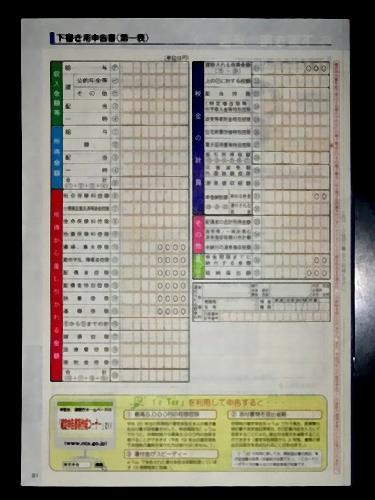 Or it may be because the instruction booklet includes a cute cartoon lady to guide you through the process. 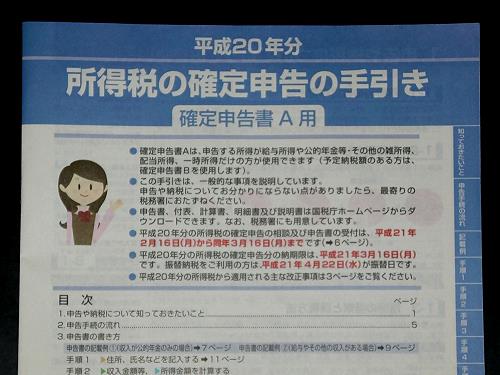 Actually, it's probably because the tax system itself is fairly straightforward. In fact, it's so simple that most people don't even have to file. Instead, employers just withhold the correct amount. But what about deductions, you ask? You tell your employer about them in December, and they make an adjustment on your last paycheck.
On Sunday, we went to Geto Ski Area, where the unusually clear skies afforded long range views in all directions. The summit is usually shrouded in fog, so it seemed like a special treat. To the east, we could see Mt. Hayachine, about 65 kilometers away in the central mountains of Iwate.  To the west, we could see Mt. Chokai, straddling the border between Akita and Yamagata, near the Sea of Japan, a little over 70 kilometers away. 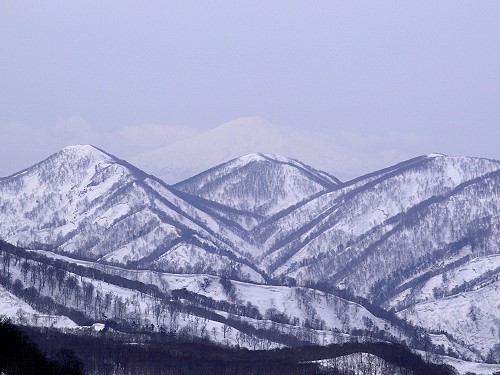 And to the north, Mt. Iwate was barely visible, also about 70 kilometers distant. (We posted a closer view of Mt. Iwate last year.) 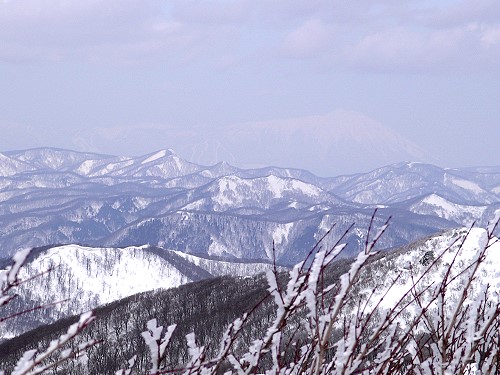 Finally, here's a map showing these mountains and Geto in relation to Kitakami and the east and west coasts of Japan. 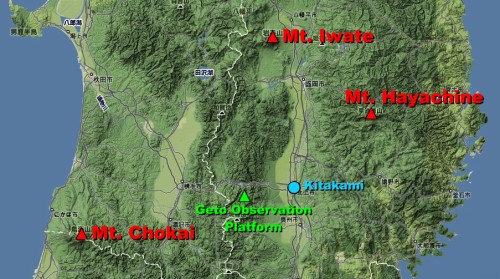
March 3 is about more than just good ear health. It's also the day of Hina Matsuri, or Girls' Day. Families with daughters celebrate the day to ensure their future happiness. The most recognizable feature of the celebration is an elaborate display of dolls ( hina ningyo). 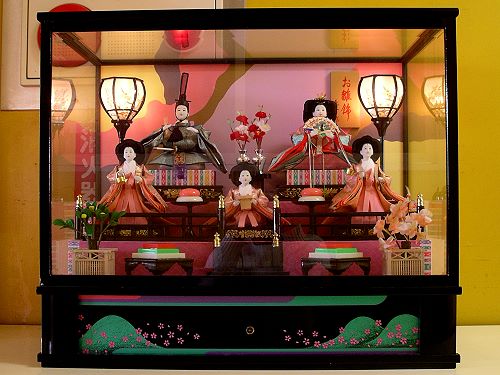 The dolls represent the emperor, empress, and members of their court. I believe the flowers are peach blossoms, which represent the traits of composure and tranquility.
Thursday, February 12, 2009, 1:46 AM GeneralPosted by stefanie Due to an upcoming koto performance, I'm in the market for a kimono. They're beautiful, so I'm excited about the chance to wear one. There's a snag involved in buying one, though: new kimono are prohibitively expensive. A new kimono, obi (belt), and all of the various accoutrements can start at $3,000. If you can find one to your liking, a used kimono is a fraction of the cost. With this in mind, on Sunday we visited a local secondhand store known to sell used kimono. The shop had one whole corner dedicated to kimono and kimono accessories. We got down to business, searching through shelves of kimono to find ones that might work. Because of my Western build, few had any chance of fitting, and we were able to quickly whittle those few down to one: a dark red kimono with simple prints of pastel birds around the hem and on the sleeves. It seemed to fit, but because we really didn't know what we were doing and knew we'd also need to choose an obi, Matthew called a local friend to come help us out. While we were waiting, a stranger who had been watching us commented on the kimono. She started wrapping and folding it as if we were actually putting it on. Our friend showed up a few minutes later, and the two of them started talking to each other about the fit. I soon filled the role of a tall, curiously-shaped mannequin, with nothing to do other than listen to the " Theme from Shaft" over the PA system and shoot quizzical looks over their heads at Matthew as the women consulted in rapid-fire Japanese. They apparently decided that it would work, because they then moved on to choosing an obi for me. We joined them in sorting through the large selection of obi. Serendipity was on our side, and we found the perfect match in a pale, silvery mocha obi woven with a cherry blossom pattern. We agreed that we'd chosen well and sealed the deal. I still have to get some accessories to complete the look, but I'm pleased with the kimono and grateful for the generous guidance of people who know what they're doing.
Amazake is sweet, non-alcoholic, fermented rice. It's served in winter as a traditional hot drink. Nowadays, it's usually made by dissolving kasu — rice pulp filtered out during sake production — in hot water. But "real" amazake is not a by-product of sake production, it's its own fermented product. Real amazake is less widely available than kasu in stores, but in my opinion, it's a vastly superior product. Although only a few grocery stores seem to have real amazake, many offer packages of moldy rice. Covered with the koji mold needed to make amazake (or sake, for that matter), it's used as a "starter" for making real amazake at home. So, here's a close-up of the moldy rice we bought last week. 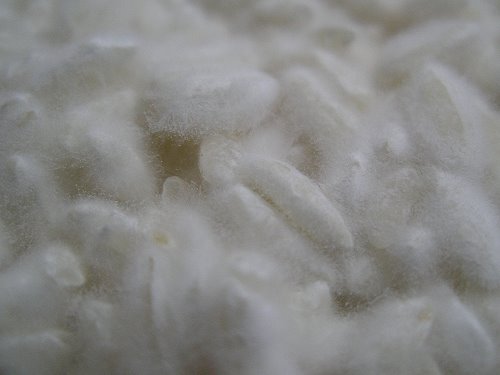 Making the amazake is fairly easy, but takes about 6 or 7 hours. In the end, it was worth it: some of the best amazake we've had!
[ 3 comments ] permalink
Next
|
|


















 Calendar
Calendar




